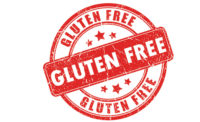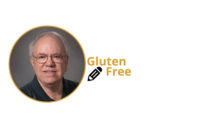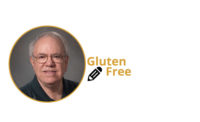Formulation and manufacturing challenges with gluten-free ingredients

The number of gluten-free products that have entered the market in recent years is quite large—almost mind-boggling. To some degree, this trend was fostered by FDA’s relatively new rule, Gluten-Free Labeling of Foods (August 2013), which allows manufacturers of foods inherently gluten-free to make such label claims. Thus, we now have gluten-free tomato sauce, a product that was probably always gluten-free.
The development of gluten-free tomato sauce illustrates that some gluten-free products are more easily developed than others. Within the snack food and bakery categories, fewer easy examples of gluten-free products exist. Grain sources of gluten are widely used in snack foods and baked goods, and thus pose challenges for manufacturers when developing gluten-free versions. Ingredient selection and ingredient processing on shared equipment and in shared facilities with gluten-containing products are key issues.
The gluten-free labeling regulation does not allow manufacturers to use ingredients derived from gluten-containing grain sources unless they can be documented to be rendered gluten-free during their production. In many cases, it can be difficult to substantiate that such ingredients have been rendered gluten-free.
If fermentation or hydrolysis processes are used in the making the ingredient, it is impossible to prove that the ingredient has been rendered gluten-free, because the partially degraded products of the gluten protein will not be detectable by conventional analytical methods like enzyme-linked immunosorbent assays (ELISAs), but may still be hazardous to sensitive consumers. FDA is aware of this analytical issue and has proposed (it is not yet a final rule) that the source must be gluten-free before the ingredient can be declared gluten-free if the ingredient has been made by fermentation or hydrolysis.
The recognition of grain sources of gluten is also not completely straightforward. Wheat and barley are the two most-common grain sources of gluten. But rye and durum wheat (semolina) are also excellent sources of gluten. FDA considers ancient wheat varieties and hybrids of typical grain sources of gluten as sources of gluten.
Because of the nature of the grain enterprise worldwide, almost any grain can be contaminated with gluten. The contamination arises from commingling from shared farm fields, harvesting equipment and on-farm and off-farm transportation vehicles and storage facilities, especially grain elevators.
Gluten-free products are often made in facilities or on equipment used to make gluten-containing products. Prevention of cross-contact in such situations can be challenging, especially in snack food facilities and bakeries where dry cleaning is necessary. Removing gluten residues requires careful development of reproducible Standard Sanitation Operating Procedures (SSOPs) and constant vigilance. Vacuuming is perhaps the best way to remove gluten-containing dust. Brush-downs and wipe-downs are also effective.
In all cases, analytical validation of the effectiveness of the SSOP is needed. Lateral-flow devices specifically for gluten and testing swabs of equipment surfaces are the optimal way to demonstrate that gluten residues have been removed. But, ultimately, when a gluten-free claim is made, testing of the finished product for gluten is recommended.
Because of the widespread use of wheat and barley in the food supply, analytical validation of both ingredients and products is necessary to support the gluten-free claim.
Looking for a reprint of this article?
From high-res PDFs to custom plaques, order your copy today!






